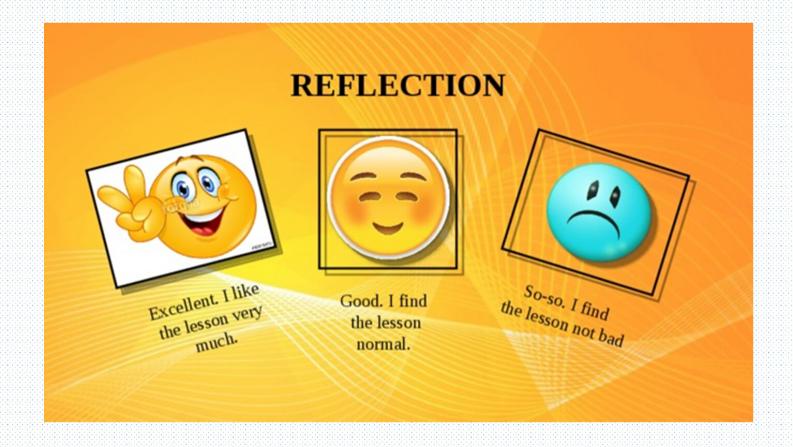Назар аударыңыз. Бұл материалды сайт қолданушысы жариялаған. Егер материал сіздің авторлық құқығыңызды бұзса, осында жазыңыз. Біз ең жылдам уақытта материалды сайттан өшіреміз
Жақын арада сайт әкімшілігі сізбен хабарласады

Бонусты жинап картаңызға (kaspi Gold, Halyk bank) шығарып аласыз
People I love
Дипломдар мен сертификаттарды алып үлгеріңіз!


Материалдың толық нұсқасын
жүктеп алып көруге болады
|
Module 3. People I love |
||||||
|
Module 3 Lesson 1 |
|
|||||
|
Teacher’s name: |
|
|||||
|
Date: |
|
|||||
|
Grade: 3 |
Number of people present: |
Number of people absent: |
||||
|
The Theme of the lesson |
My family |
|||||
|
Objectives according to the Curriculum |
3.1.2.1 recognise familiar words with visual support 3.2.2.1 use isolated words and basic expressions to provide personal information 3.4.1.1 spell accurately a few high-frequency words |
|||||
|
Objectives of the lesson |
All learners will be able to:
Most learners will be able to:
Some learners will be able to:
|
|||||
|
Evaluation criteria |
Demonstrate respect to people’s answers using lexical units of topic vocabulary; Form questions and give constructive answers to feedback; |
|||||
|
Level of thinking skills |
|
|||||
|
During the lesson: |
||||||
|
The stage of the lesson/timing |
Actions of the teacher: |
Actions of the pupils: |
Student actions with special educational needs |
Assessment |
Resourses |
|
|
The beginning of the lesson/ 5 min |
1.Organisational moment – 1 min The teacher greets students; 2.Launching a new topic (4 min) · Show a picture of a family (see Materials) · Say This is a family. · Ask How many are they? · Count with the class. · Continue with the pictures of other families. · Stick the pictures on the board. |
Students respond to greeting and take their places. Students follow instructions. Count family members. |
S Students follow instructions. Count family members. |
|
|
|
|
The middle of the lesson – 35 min |
Introduction (5 min) · Take out the family flashcards. · Hold up the mum flashcard and say the word. · Point to a mum in one of the pictures on the board and say: This is a mum. · Continue with the rest of the flashcards and pictures on the board. · Leave the family pictures on the board for the Ending the lesson activity Class work (5 min) • Ex1. Listen and point. Say the words. Practise members of the family. · Point to the two characters and ask who they are. · Point to Misty’s family and say This is Misty’s family. How many are they? · Play the recording twice (2nd time - for students to repeat the words). BIG QUESTION. Make students aware of what a family is. · Read the Big Question. Ask students how many are in their family. · Ask why they think a family is important. Class work (5 min) • Ex2. Listen and chant. · Elicit from students what they see in the scene. · Students count the members of the family with you and say who they think each of them is, e.g. mum. · Play the recording twice (2nd time with pauses - everyone repeat new words) · Teach the word crazy. · Say the chant as a class and then in groups. Ex.3. Personalise and practise the new language (5 min) · Volunteer students talk about their families using I’ve got … · Other students tell you about their families. They say the members of their family and how many there are in their families. Grammar. Singular and Plural (7 min) • Say brother – brothers, sister – sisters. • Ask: What we add to make plurals? Elicit students’ answers. • Explain the rule, make examples with the students. Ex 1. Make Singular words Plural. • Explain the task. Key: dog – dogs, car – cars, train – trains, sock – socks, star – stars. Pair work ( 8 min) Ex 4. Draw and show your family tree. Ask and say: This is my … · Show a photo of one of the members of your family and introduce him/her, e.g. This is my brother. · Continue with the rest of your family. · Hand out paper. · They use This is my … to introduce their family members. · Change pairs and continue with the activity. · Students keep the drawing for the Ending the lesson activity. |
S
Students look at the pictures in their Student’s Book. Students listen and point to the corresponding member of the family.
Students respond teacher’s questions.
Students count the members of the family and respond the question who is who?
Students listen and follow the c
Students speak about their family.
Students give information about themselves (My name is…) Students make up their own examples in order to understand the rule. Students complete the task and check with the teacher. S |
Students repeat new words after the teacher.
Students look at the pictures Students point to the corresponding member of the family.
Students respond teacher’s questions. Students count the members of the family with the teacher.
Students listen and follow the chant. Students speak about their family Students work in pairs with motivated students, and with their help make up their own examples. Students work in pairs and complete the task and check with the teacher. S |
Self-check 6 points:
|
the family flashcards Student’s book Audio Slides Student’s book Audio Slides SB SB Slides |
|
|
T |
Review members of the family · Stick the flashcards in random order around the pictures of the families. Describe the hometask and give examples. |
Volunteer students come to the front and draw lines from the flashcards to the corresponding member of the family in any of the pictures. Students get the hometask and give examples according to the tasks. They are able to ask questions if needed. |
Students find correspondences. Students get the hometask and give examples according to the tasks. They are able to ask questions if needed. |
The teacher provides feedback to students on class activities. The teacher gives points for the lesson from 1-10 |
Flashcards |
|
|
Module 3 Lesson 2 |
|
||||||
|
Teacher’s name: |
|
||||||
|
Date: |
|
||||||
|
Grade: 3 |
Number of people present |
Number of people absent |
|||||
|
The Theme of the lesson |
I have got a family. |
||||||
|
Objectives according to the Curriculum |
3.1.2.1 recognise familiar words with visual support; 3.4.2.2 use words and short simple phrases to complete a written text at a sentence level; 3.5.1.11 use has got/ have got; there is/are in a limited range of familiar topics. |
||||||
|
Objectives of the lesson |
All learners will be able to:
Most learners will be able to:
Some learners will be able to:
|
||||||
|
Evaluation criteria |
Demonstrate respect to people’s answers using lexical units of topic vocabulary; Form questions and give constructive answers to feedback; |
||||||
|
Level of thinking skills |
|
||||||
|
During the lesson: |
|||||||
|
The stage of the lesson/timing |
Actions of the teacher: |
Actions of the pupils: |
S |
Assessment |
Resourses |
||
|
The beginning of the lesson/ 5 min |
1.Organisational moment – 1 min The teacher greets students; 2.Launching a new topic (4 min) •Hold a flashcard of family members and tell the class: I have got a sister, this is my sister. • Elicit students’ answers. |
Students respond to greeting and take their places. Students translate the sentences and guess the topic of the lesson. |
Students respond to greeting Students translate the sentences and guess the topic of the lesson. |
|
flashcard of family members |
||
|
The middle of the lesson – 35 min |
Class work (10 min) • Ex1. Watch, listen and say. Has got/ have got; there is/are. • Ask students to pay attention on grammar focus. • Explain the rule have got / has got, make examples with students. • Ask students to Look at the picture and complete the task individually. Students then may work in pairs to compare the answers. Checking (5 min) Check with the class. Correct mistakes. Key: 1 have got, 2 haven’t got, 3 haven’t got, 4 have got, 5 have got, 6 have got. Class work (10 min) Ex.3. Tell about your family. Practice speaking skills. • Ask students to tell about their families using the new grammar. Listen to the students, correct mistakes. Class work (10 min) Ex.4. listen and sing. • Elicit grandma, grandpa, guitar, rocking chair. • Use the picture to support/ check meaning whenever possible. • Play the recording. Check understanding of new vocabulary. • Use the karaoke version for students to sing in 4 groups. Ex.5. draw a picture of someone in your family and write about them. Practice writing from a model. • Check students understand what is required. • Go around the class to elicit who each student is going to draw and what the person is like. Supply vocabulary as needed. Give feedback as appropriate. |
Students make up sentences in order to understand an remember a new rule.
Students complete the task individually.
Students check their work. Students speak about their family. Students look at the picture in the SB. students repeat new words after the teacher. Students follow the sing in SB. All sing the song together. Students draw their pictures and write a first draft. |
Students work in pairs with motivated students, and with their help make up sentences in order to understand an remember a new rule. Students work in pairs and complete the task. Students check their work in pairs. Students speak about their family. Students look at the picture in the SB. students repeat new words after the teacher. Students listen to the audio and sing the song together. Students draw their pictures and write about the chosen person.
|
Self-check 6 points:
Students evaluate each other. |
Student’s book Student’s book Slides, SB, Flashcards, Audio/video Slides |
||
|
The end of the lesson – 5 min |
Ending the lesson with a song (WB Act.2) • Put students into pairs. Use the karaoke version. Describe the hometask and give examples. |
The students sing a song together.
Students get the hometask and give examples according to the tasks. They are able to ask questions if needed. |
The students sing a song. Students get the hometask and give examples according to the tasks. They are able to ask questions if needed. |
The teacher provides feedback to students on class activities. The teacher gives points for the lesson from 1-10 |
To learn new vocabulary. |
||
|
Module 3 Lesson 3 |
|
||||||
|
Teacher’s name: |
|
||||||
|
Date: |
|
||||||
|
Grade: 3 |
Number of people present |
Number of people absent |
|||||
|
The Theme of the lesson |
What have you got? |
||||||
|
Objectives according to the Curriculum |
3.1.2.1 recognise familiar words with visual support; 3.3.5.1 read short, illustrated fiction and non- fiction stories written in very simple language using a dictionary. |
||||||
|
Objectives of the lesson |
All learners will be able to:
Most learners will be able to:
Some learners will be able to:
|
||||||
|
Evaluation criteria |
Demonstrate respect to people’s answers using lexical units of topic vocabulary; Form questions and give constructive answers to feedback; |
||||||
|
Level of thinking skills |
|
||||||
|
During the lesson: |
|||||||
|
The stage of the lesson/timing |
Actions of the teacher: |
Actions of the pupils: |
Student actions with special educational needs |
Assessment |
Resourses |
||
|
The beginning of the lesson/ 5 min |
1.Organisational moment – 1 min The teacher greets students; 2.Launching a new topic. Introduce new topic. (4 min) • Say: red, pen, men. Ask What sound can your hear? Elicit students’ answers. • Present the new topic. |
Students respond to greeting and take their places. Students respond questions. |
Students respond to greeting Students respond questions. |
|
|
||
|
The middle of the
l |
Class work (10 min) Ex.1. Listen and say. Use common present simple forms and contractions. • Introduce new language have you got …? Say we ask Have you got…? To make questions. Ask students questions about family members. Example: Have you got a sister? Have you got a mum? Check students’ answers. Correct mistakes. Class work (15 min) Ex.2. Read and match. Practice the new language. • Read short, illustrated fiction and non- fiction stories written in very simple language using a dictionary. • Ask students to work in pairs and check the answers. • Check with the class. Correct mistakes. Key: 1-b, 2-a, 3-f, 4-d, 5-c, 6-e. Class work (10 min) Ex. 3. Ask and answer. Practice new language have you got …? • Ask students to make sentences and ask each other about their family members. • Check students’ answers. Correct mistakes. |
Students answer the questions.
Students work individually and complete the task.
Students make up sentences. |
Students answer the questions. Students work in pairs and complete the task. Students make up sentences. |
Self-check 6 points:
Students evaluate each other. |
SB, S |
||
|
The end of the lesson – 5 min |
Review new language. • Ask students to make questions about your family members. Example: Teacher, have you got a sister? Describe the hometask and give examples. |
Students ask questions and teacher answers Students get the hometask and give examples according to the tasks. They are able to ask questions if needed. |
Students ask questions and teacher answers Students get the hometask and give examples according to the tasks. They are able to ask questions if needed. |
The teacher provides feedback to students on class activities. The teacher gives points for the lesson from 1-10 |
To learn new vocabulary. |
||
|
Module 3 Lesson 4 |
|
||||||
|
Teacher’s name: |
|
||||||
|
Date: |
|
||||||
|
Grade: 3 |
Number of people present |
Number of people absent |
|||||
|
The Theme of the lesson |
The spider |
||||||
|
Objectives according to the Curriculum |
3.1.1.1 recognise the sounds of phonemes and phoneme blends in words; 3.1.4.2 understand simple descriptions of people, actions, and objects with visual support; 3.2.1.1 pronounce various sounds of phonemes and phoneme blends using appropriate stress, rhythm, and intonation; 3.3.2.1 identify some familiar words and signs on illustrations /pictures in common everyday situations; 3.3.2.2 deduce the meaning of a word in a picture or icon on a limited range of topics. |
||||||
|
Objectives of the lesson |
All learners will be able to:
Most learners will be able to:
Some learners will be able to:
|
||||||
|
Evaluation criteria |
Demonstrate respect to people’s answers using lexical units of topic vocabulary; Form questions and give constructive answers to feedback; |
||||||
|
Level of thinking skills |
Critical thinking (WB): Sorts and classifies objects and activities according to key features Spider |
||||||
|
During the lesson: |
|||||||
|
The stage of the lesson/timing |
Actions of the teacher: |
Actions of the pupils: |
Student actions with special educational needs |
Assessment |
Resourses |
||
|
The beginning of the lesson/ 1 min |
1.Organisational moment – 1 min The teacher greets students; |
Students respond to greeting and take their places. |
Students respond to greeting |
|
|
||
|
The middle of the lesson – 39 min |
Class work (10 min) Ex.1. Why is Misty happy? Review the characters, and present a picture story. · Elicit which animal is in the story. Ask students to look at the beginning of the story and guess which of the Super Friends really likes spiders (Whisper) and which Super Friend doesn’t like spiders (Flash). · Teach touch, table and tree using the pictures. · Ask Where’s the spider in picture 3? · Play the audio. Students listen for the answer to the question. For script see SB p 38. · Elicit the answer. Point out that in the story the spider is called he because it can speak, but usually we use it to refer to animals. · Play the whole Super Friends video. Then play the video again, pausing to check comprehension. Explain the meaning of clever, amazing and great and make sure students realise that Flash changes her mind about spiders. Ask what the spider is doing in picture 6. Mime thinking and then having an idea to explain I’ve got an idea. Ask who the spiders are at the end of the story, and check comprehension of brothers and sisters. · Talk with the class about the value (being brave). Ask who is brave in the story (Flash, because she overcomes her fear of the spider). Key: He’s under the table. . Class work (10 min) Ex.2. Look at the picture and tick the correct sentence. · Revise clever. · Students read the four sentences silently and circle yes or no. They compare answers in pairs. · Check with the class. Ex. 3. Find who says … Present the letter sound /e/ • Write Clever on the board, using a red pen for the letter e in each word. Separate out the three phonemes in the words and say each one separately (e.g. C-l-e-v-e-r) before saying the whole word. • Students repeat He is clever after you. • Students find the sentence and the picture of the Boy in the story and point (picture 4). Key: Flash Class work. practice the sound /e/, a short vowel sound (10 min) Ex. 4. Listen and say. · Play the recording. Repeat the sentence as a class without the recording. Say it loudly, slowly, quickly, whisper it, etc. Ex. 5. Listen and read. Practice pronunciation and new language. • Ask students to make examples with sound [e] • Say Use This/That is for object, Use These/Those are for objects. • Make examples with the class. Class work. Practice the new words and sound /e/. (5 min) Ex. 6. Match a word to the picture. · Ask students to complete the task. Check with the class. · Pronounce various sounds of phonemes and phoneme blends using appropriate stress, rhythm, and intonation. |
Students mime heroes’ special powers
Students look at the pictures and guess the answer
Students follow the instructions. Students repeat He is clever after the teacher. Students recognize the sounds of phonemes.
Students look at the picture, read and repeat. Students take turns to repeat in pairs.
Students listen and repeat the words. Make up sentences. Students follow instructions. |
Students recall and tell the super powers of the heroes. Students look at the pictures and guess the answer Students work in pairs and follow the instructions.
Students practice the pronunciation of /e/ sound by repeating the phrase He is clever Students in pairs look at the picture, read and repeat. Students repeat the words after teacher. Make sentences. Students follow instructions. |
Self-check 6 points:
Students evaluate each other. |
Student’s book Audio/video Slide SB Student’s book Student’s book Audio Audio SB |
||
|
The end of the lesson – 5 min
|
Ending the lesson • Elicit the value in the story and ask students who is brave at the beginning and why (Whisper, because he’s holding the spider). • Ask students how Whisper helps his friends be brave in the story. Elicit examples of people who help the students feel braver. Note: This discussion will probably need to take place in L1. Describe the hometask and give examples. |
Students practiсe the role play in groups. Students get the hometask and give examples according to the tasks. They are able to ask questions if needed. |
Students practiсe the role play in groups. Students get the hometask and give examples according to the tasks. They are able to ask questions if needed. |
The teacher provides feedback to students on class activities. The teacher gives points for the lesson from 1-10 |
To learn new vocabulary. |
||
|
Module 3 Lesson 5 |
|
||||||
|
Teacher’s name: |
|
||||||
|
Date: |
|
||||||
|
Grade: 3 |
Number of people present |
Number of people absent |
|||||
|
The Theme of the lesson |
Meet Dina's family! |
||||||
|
Objectives according to the Curriculum |
3.1.2.1 recognize familiar words with visual support 3.2.3.1 respond to basic questions with single words or short responses 3.1.4.2 understand simple descriptions of people, actions, and objects with visual support |
||||||
|
Objectives of the lesson |
All learners will be able to:
Most learners will be able to:
Some learners will be able to:
|
||||||
|
Evaluation criteria |
Demonstrate respect to people’s answers using lexical units of topic vocabulary; Form questions and give constructive answers to feedback. |
||||||
|
Level of thinking skills |
|
||||||
|
During the lesson: |
|||||||
|
The stage of the lesson/timing |
Actions of the teacher: |
Actions of the pupils: |
Student actions with special educational needs |
Assessment |
Resourses |
||
|
The beginning of the lesson/ 5 min |
1.Organisational moment – 1 min The teacher greets students; 2.Launching a new topic (4 min) · Play a game of ‘I spy’. say I spy with my little eye something which is pink and green. |
Students respond to greeting and take their places. Students look around the classroom and look for things which are pink and green, then guess by saying the person and the thing (name’s shoes) |
Students respond to greeting
|
|
|
||
|
The middle of the lesson – 35 min |
Class work (10 min) Ex.1. Listen and read the dialogue. Practice reading and listening skills. • Say What can you see in this picture? Elicit students’ answers. • Ask students to listen and read the dialogue. • Check pronunciation. Checking (5 min) Choose the correct word. Practice new phrases. • Ask students to read the dialogue again and complete the task. • Check with the class. Key: 1. Have you got a sister? – Yes, I have. 2. Are you OK? – Yes, thanks. And you? 3. Come and meet my family. – With pleasure. Thank you. 4. How many brothers and sisters have you got? – Two sisters and two brothers! 5. Look, that is my family. – Wow, you’ve got a big family. Class work (10 min) Ex.2. Listen and look. Practice face words. • Play the recording. Students point to the face words when they hear them. • Play the recording again. Students repeat the new words. • Students practice pointing and naming in pairs. Remember! • Say: Use have got/has got to describe people. • Give examples: Mum has got red hair. Dad hasn’t got brown eyes. • Practice with the class. Ex.3. Describe Nick’s family. Practice new language and speaking skills. • Ask: Whose family is it? Elicit students’ answers. • Ask students to make questions about Nick’s family. Give students time to think. • Students ask and answers about Nick’s family. |
Students answer the question, listen to the dialogue, try to pronounce words correctly.
Students work in pairs and respond to the task. Check each other.
S Students look at the picture in the Students’ Book and point to the face words when they hear them.
Students make sentences with have/has got. Students look at the picture in the Students’ Book and make questions about Nick’s family |
Students answer the question, listen to the dialogue, try to pronounce words correctly. Students work in pairs with motivated students, and with their help complete the task. Students work in pairs and point to the pictures Students look at the picture in the Students’ Book and in pairs point to the face words when they hear them. Students practice the rule have/has got Students look at the picture in the Students’ Book and make questions about Nick’s family |
Self-check 6 points:
Students evaluate each other. |
Audio, slide Student’s book Audio Student’s book SB |
||
|
The end of the lesson – 5 min |
Rewie key language from the lesson: Point to parts of your face and elicit the new words. Use the glasses flashcards if don’t wear glasses. Describe the home task and give examples. |
The students name parts of the face.
Students get the hometask and give examples according to the tasks. They are able to ask questions if needed. |
The students name parts of the face. Students get the hometask and give examples according to the tasks. They are able to ask questions if needed. |
The teacher provides feedback to students on class activities. The teacher gives points for the lesson from 1-10 |
To learn new vocabulary. |
||
|
Module 3 Lesson 6 |
|
||||||
|
Teacher’s name: |
|
||||||
|
Date: |
|
||||||
|
Grade: 3 |
Number of people present |
Number of people absent |
|||||
|
The Theme of the lesson |
An animal family |
||||||
|
Objectives according to the Curriculum |
3.1.2.1 recognize familiar words with visual support 3.2.2.1 use isolated words and basic expressions to provide personal information 3.4.1.1 spell accurately a few high-frequency words |
||||||
|
Objectives of the lesson |
All learners will be able to:
Most learners will be able to:
Some learners will be able to:
|
||||||
|
Evaluation criteria |
Demonstrate respect to people’s answers using lexical units of topic vocabulary; Form questions and give constructive answers to feedback; |
||||||
|
Level of thinking skills |
Critical thinking (WB): Matches objects, people, letters, pronunciations and words. |
||||||
|
During the lesson: |
|||||||
|
The stage of the lesson/timing |
Actions of the teacher: |
Actions of the pupils: |
Student actions with special educational needs |
Assessment |
Resourses |
||
|
The beginning of the lesson/ 5 min |
1.Organisational moment – 1 min The teacher greets students; 2.Launching a new topic. Identify animal families (4 min) What is an animal family? · With the Student’s Books closed, play the Think and learn video. · Elicit from students what animals they have seen in the video. · Ask: What colour are the hen’s babies? How many are there in the duck family? What’s your favourite family in the video? |
Students respond to greeting and take their places. Students answer the questions. |
Students respond to greeting Students answer the questions |
|
Video |
||
|
The middle of the lesson – 35 min |
Introduction. Teach animal sounds in English (5 min) Warm-up · Say the name of animals in your native language and ask students to produce the sounds they make. · Say Woof, woof and elicit what animal students think this sound is produced by. · Continue with meow, cluck and quack. · Touch one animal at a time for students to produce its sound. · Touch the drawings in random order and change speed. Class work (10 min) • Ex1. Listen and point. Present words to describe animal families · Students open their books. · Play the recording. · Students listen and point to the corresponding animal. • Ex2. Look and match. Identify animal families · Point to the adult animals and ask What are they? (Dogs.) · Point to a puppy and say This is a puppy, a baby dog. · Check performance as a class. Stronger students: Teach the name of the other baby animals that appear on the page, i.e. kitten, chick and duckling. Encourage students to say the name of the adult animals and the name of their babies. Key: 1 red, 2 green, 3 blue, 4 orange Pair work (10 min) • Ex3 Look and circle the different animal. · Pairs look at the pictures in their books and identify the animals that don’t belong. · Elicit what family each one is, e.g. a dog family. · Ask what animal does not belong to the family. Key: 1 the kitten, 2 the duckling, 3 the dog Class work (10 min) 4 Make an animal family. Say. · Student choose a template of a cat or dog animal family. They colour, cut out and make their finger puppets. · They pretend they are one of the members of the family, e.g. a kitten. · They wear it on one hand, while they wear the rest of the family on the opposite hand. · Students use their chosen puppet to introduce its family: This is my family. · Then pairs ask questions about each other’s family members: Is this your (brother)? · Family members introduce themselves by saying Hello, what’s your name? I’m … · Encourage students to use animal sounds as well. · Invite pairs to perform in front of the class. · Take photos of the finger puppets and save them to students’ digital portfolios. |
Students imitate animal sounds. Guess the animals. Volunteer students draw the animals on the board. Students point to the corresponding animal. Students work in pairs and match the parents to their babies.
S Students follow instructions. S |
Students imitate animal sounds. Guess the animals.
Students work in pairs with motivated students, and with their help point to the corresponding animal. Students work in pairs and match the parents to their babies.
Students circle the animal that does not belong in each case. S |
Self-check 6 points:
Students evaluate each other. |
Audio, slide Student’s book Audio Student’s book |
||
|
The end of the lesson – 5 min |
Lesson review · With students, review what they have learnt in the lesson and if they liked the project. · Hold a class vote for the best puppet family performance. Describe the hometask and give examples. |
Students review what they have learnt in the lesson. Students get the hometask and give examples according to the tasks. They are able to ask questions if needed. |
Students review what they have learnt in the lesson. Students get the hometask and give examples according to the tasks. They are able to ask questions if needed. |
The teacher provides feedback to students on class activities. T |
To learn new vocabulary. |
||
|
Module 3 Lesson 7 |
|
||||||
|
Teacher’s name: |
|
||||||
|
Date: |
|
||||||
|
Grade: 3 |
Number of people present |
Number of people absent |
|||||
|
The Theme of the lesson |
Describe your friends |
||||||
|
Objectives according to the Curriculum |
3.4.1.1 spell accurately a few high-frequency words 3.3.2.1 identify some familiar words and signs on illustrations /pictures in common everyday situations 3.2.3.3 make introductions and requests in basic interaction with others |
||||||
|
Objectives of the lesson |
All learners will be able to:
Most learners will be able to:
Some learners will be able to:
|
||||||
|
Evaluation criteria |
Demonstrate respect to people’s answers using lexical units of topic vocabulary; Form questions and give constructive answers to feedback; |
||||||
|
Level of thinking skills |
|
||||||
|
During the lesson: |
|||||||
|
The stage of the lesson/timing |
Actions of the teacher: |
Actions of the pupils: |
Student actions with special educational needs |
Assessment |
Resourses |
||
|
The beginning of the lesson/ 5 min |
1.Organisational moment – 1 min The teacher greets students; 2.Launching a new topic (4 min) Watch a video and sing a song “Everybody is different” |
Students respond to greeting and take their places. Students close their books and in groups brainstorm the word “hello and hi”. |
Students respond to greeting
|
|
Video https://www.youtube.com/watch?v=LWQn3mbignQ |
||
|
T |
Warm-up. Review face words. (10 min) • Write the 1st 2 letters of each face word on the board, with dashes to show how many other letters there are in the word, e.g. gl_ _ _ _ _. • Place flashcards on the board. Key: 1. Nose, 2. Mouth, 3. Ears, 4. Face, 5. Hair, 6. Eyes. Class work. Give students practice with the new language. (10 min) Ex2. Look and read. Then say Yes or No. • Students look at the sentences and the pictures in the Students’ Book. • Do the first one as an example with the class. • Check students know what to do. • They read the sentences and answer yes or no. • Check answers with the class. Key: 1. No, 2. No, 3. Yes, 4. No, 5. No, 6. Yes. Pair work (10 min) Ex.3. Ask and answer to describe your friends. Practice new language and speaking skills. • Ask students to work in pairs. • Explain the task. Give students time to think and make a dialogue. • Check and correct mistakes.
Class work. Practice speaking skills and new language. (5 min) • Choose one student and describe him/her. Ask students to find his/her name. |
With books closed, students write the words and compare their spelling in pairs.
Students follow all the instructions.
Students make a dialogue.
Students take turns and tell about each other. |
Students work in pairs with motivated students, and with their help write the words and compare their spelling. Students work in pairs and complete the task. Students work in pairs and make a dialogue. Students take turns and tell about each other. |
Self-check 6 points:
Students evaluate each other. |
Flashcards slide. Student’s book SB Slides |
||
|
T |
Reflexion “Reflexion Target”
Describe the hometask and give examples. |
The students analyse their activities in the lesson by filling in the corresponding circle. Students get the hometask and give examples according to the tasks. They are able to ask questions if needed. |
The students analyse their activities in the lesson by filling in the corresponding circle.
Students get the hometask and give examples according to the tasks. They are able to ask questions if needed. |
The teacher provides feedback to students on class activities. The teacher gives points for the lesson from 1-10 |
To learn new vocabulary. |
||
|
Module 3 Lesson 8 |
|
||||||
|
Teacher’s name: |
|
||||||
|
Date: |
|
||||||
|
Grade: 3 |
Number of people present |
Number of people absent |
|||||
|
The Theme of the lesson |
|||||||
|
Objectives according to the Curriculum |
3.1.2.1 recognise familiar words with visual support; 3.2.2.1 use isolated words and basic expressions to provide personal information 3.3.2.1 identify some familiar words and signs on illustrations /pictures in common everyday situations. |
||||||
|
Objectives of the lesson |
All learners will be able to:
Most learners will be able to:
Some learners will be able to:
|
||||||
|
Evaluation criteria |
Demonstrate respect to people’s answers using lexical units of topic vocabulary; Form questions and give constructive answers to feedback; |
||||||
|
Level of thinking skills |
Creative thinking: Chooses options to create something new |
||||||
|
During the lesson: |
|||||||
|
The stage of the lesson/timing |
Actions of the teacher: |
Actions of the pupils: |
Student actions with special educational needs |
Assessment |
Resourses |
||
|
The beginning of the lesson/ 5 min |
1.Organisational moment – 1 min The teacher greets students;
· Ask students to sit comfortably, put their heads on their desks and close their eyes. · Play soft music for several minutes for the class to relax. · Students open their eyes. · Give instructions for them to stretch their arms, legs and backs. |
Students respond to greeting and take their places. Students follow instructions. |
Students respond to greeting Students follow instructions. |
|
|
||
|
The middle of the lesson – 35 min
|
Introduction (5 min) Listen and imagine. Then draw your picture. · Play the recording. · After students open their eyes, they draw a picture in their books and colour it. Class work (5 min) Ex.1. Show your picture to your friend. Say. · Students walk around the classroom and show their drawings to their partners. · Students share their pictures and tell the class about it. · Check the answers. Correct mistakes. Pair work (10 min) Ex.2. Read and say the correct answer. Review language from the unit by doing a quiz. · Make sure students know how to answer by circling one option for each sentence, using the picture clues. Do the first item as an example, if necessary. · The first time, they do it without looking back through the unit. Checking (5 min) · Students then look back to check questions they did not know. · Check answers with the class. Key: 1 a, 2 b, 3 b, 4 a, 5 b, 6 a, 7 b, 8 a Class work (10 min) · Make two groups. · Two students per group come to your desk. · Give the letters of a short word (see Materials) to each group face down. · When you say Go! students turn the letters round and make a word. · · Continue with other students. Stronger students: Hand out the letters for longer words if you consider students are confident enough to make the words. |
Students draw the picture.
S Students do the quiz in pairs. Pairs check their work with other pairs. S |
Students work in pairs with motivated students, and with their help draw the picture.
Students work in pairs and describe their friends drew on the picture. Students do the quiz in pairs. Pairs check their work with other pairs. Students work in groups. |
Self-check 6 points:
S |
Audio, slide. Slides SB Slides Flashcards |
||
|
The end of the lesson – 5 min |
Reflexion
Describe the home task and give examples. |
The students analyse their activities in the lesson by choosing the appropriate emotion. Students get the home task and give examples according to the tasks. They are able to ask questions if needed. |
The students analyse their activities in the lesson by choosing the appropriate emotion. Students get the home task and give examples according to the tasks. They are able to ask questions if needed. |
The teacher provides feedback to students on class activities. The teacher gives points for the lesson from 1-10 |
To learn new vocabulary. |
||


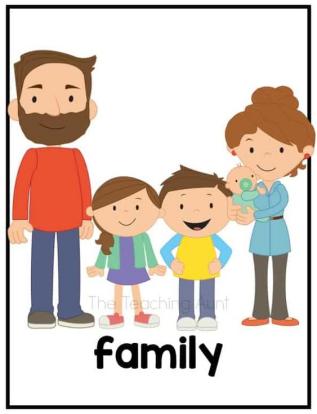 tudents respond
to greeting
tudents respond
to greeting
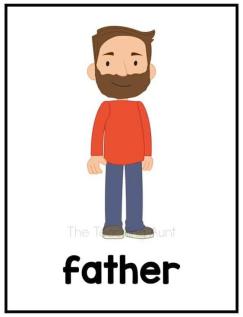
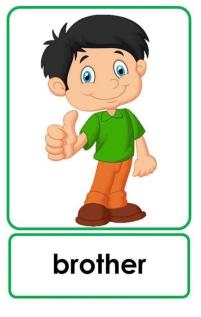 tudents repeat new
words after the teacher.
tudents repeat new
words after the teacher. hant in their Student’s
Books.
hant in their Student’s
Books. tudents draw
their family and colour it.
tudents draw
their family and colour it.

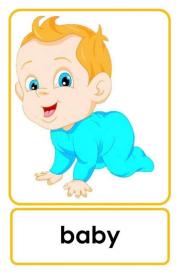 tudents draw their
family and colour it in pairs.
tudents draw their
family and colour it in pairs. he end of the
lesson – 5 min
he end of the
lesson – 5 min tudent actions with special
educational needs
tudent actions with special
educational needs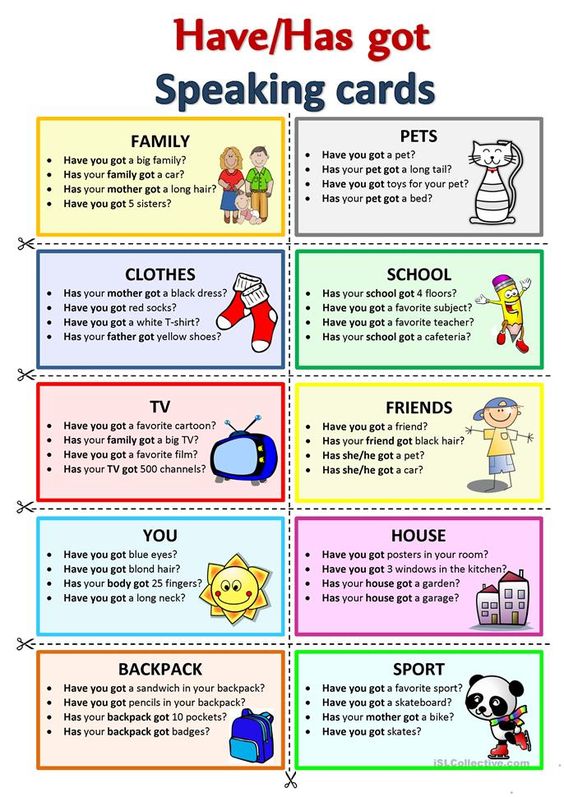

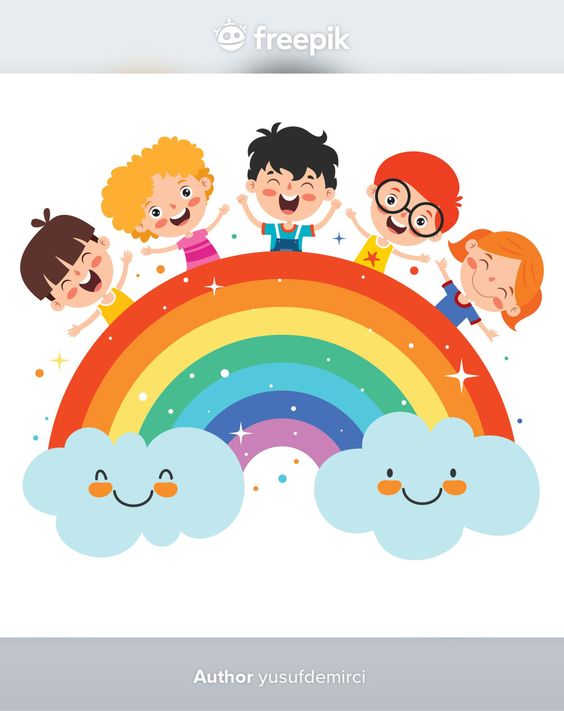
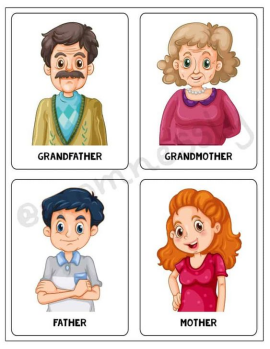
 esson – 35
min
esson – 35
min

 lides
lides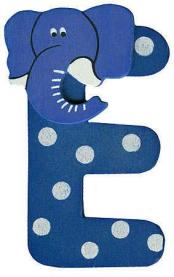
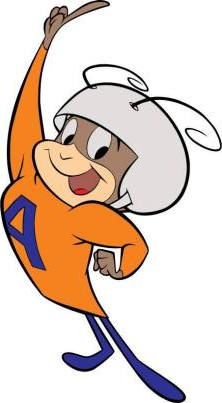

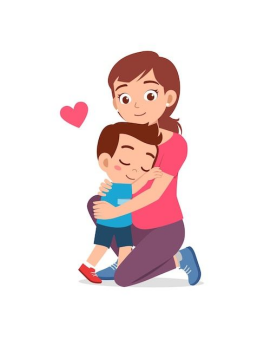 tudents work in pairs
and point to the pictures.
tudents work in pairs
and point to the pictures.

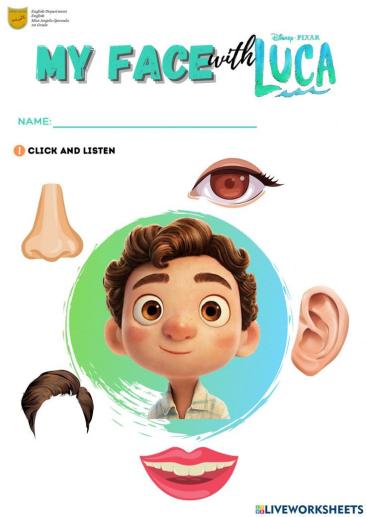

 tudents
tudents tudents work in pairs
and follow the instructions.
tudents work in pairs
and follow the instructions.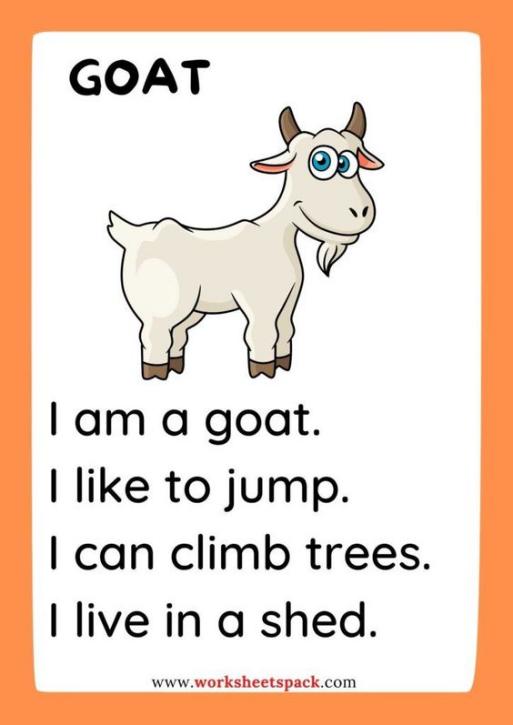
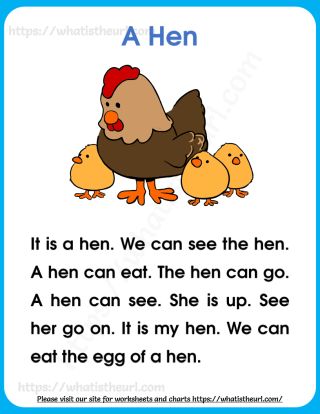 tudents work in pairs
and together complete the
task.
tudents work in pairs
and together complete the
task. inding correct questions
– 2 points;
inding correct questions
– 2 points; he teacher gives points
for the lesson from 1-10
he teacher gives points
for the lesson from 1-10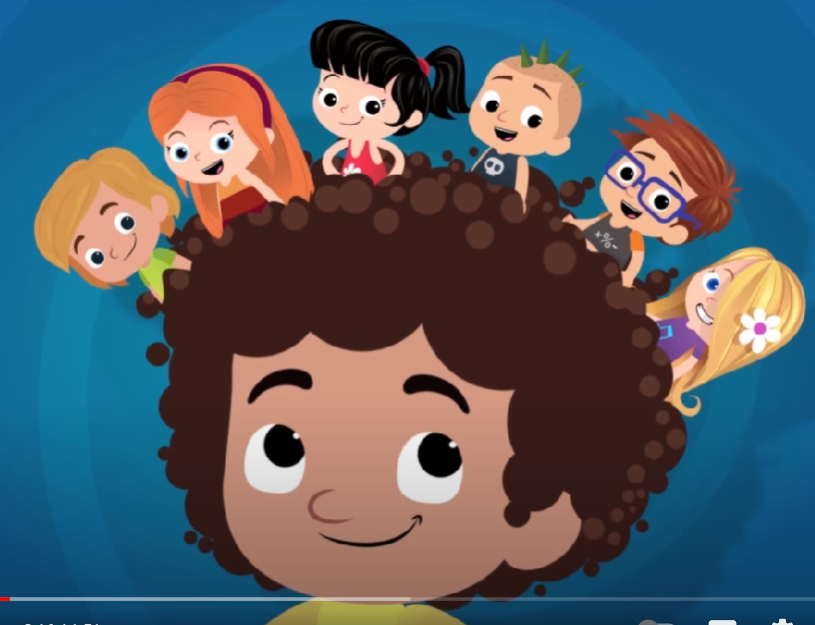
 he middle of the lesson
– 35 min
he middle of the lesson
– 35 min

 he end of the lesson –
5 min
he end of the lesson –
5 min


 The group that makes the word the quickest gets a
point.
The group that makes the word the quickest gets a
point. tudents describe their friends
drew on the picture.
tudents describe their friends
drew on the picture. tudents turn the
letters they got round and make a
word.
tudents turn the
letters they got round and make a
word.
 tudents evaluate each
other.
tudents evaluate each
other.